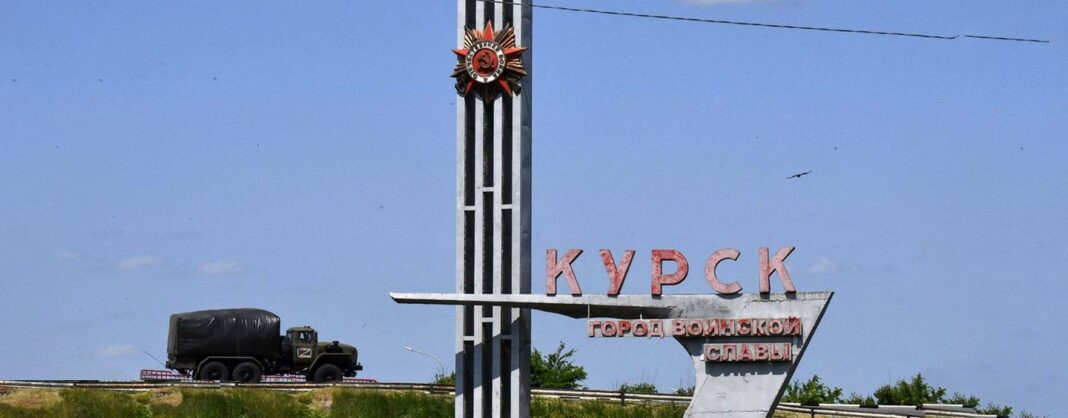
By Dr. Vakhtang Maisaia Ph.D. in politics and military science. International Military Expert, CIRSA (Republic of Poland)
New transformation has been fixing in war in Ukraine when during the eight months of active combat operation lull all of sudden the Ukrainian AF strategic command launched its own “the Ukrainian Blitzkrieg” and reutilized Soviet military school strategy named as “Mirror Strike” Strategy. The massive strike from Sumy and Kharkiv regions where the first one was the primary and second was as diversionary strike. During the operational-strategic launch by the Ukrainian Armed Forces due to the operative surprise and operational camouflage or disguise the Ukrainian Armed Forces have been taken over operative initiative and seized inside of the Russian Kursk Oblast bridgehead in depth in 30 km and in width in 65 km. The bridgehead position is equal to conduct military breakthrough at level of “Division-Army Corp” and could be treated as operational-strategic operation taking into account that the Ukrainian Armed Forces whose combat potential is equal at least to five brigades and two brigade in reserve forces (the Ukrainian brigade consists of 4000-6000 militaries) supplemented by the air defense and anti-missile and special drone run compounds. The Ukrainian AF are compensating lack of air support operations by the massive tactical, operational and even operational strategic drone exploitations and are capable to prolong and keep up the tempo of combat active operations with more increasing the main bridgehead zone. The “Ukrainian Blitzkrieg” from military operational standpoint presumably oriented to launch simultaneous strike to two Russian Oblast – Kursk and Belgorod and after expand it toward Briansk Oblast with seizure of strategic objects and places, including big administrative centers and cities (like Suja and Kursk) as well as to get closed toward Kursk Nuclear Station which has dual used dimensions (peaceful and military) strategic object. The total area of the Ukrainian operational zone is about 1000 km in square. From political and geopolitical view, the “Ukrainian Blitzkrieg” have even several missions and reasons. Among them are:
- To provide unloading of the Ukrainian defense in Donetsk and Lugansk occupied territories where the Russian forces are active at the stage;
- To take over operational initiative from the Russian Armed Forces operating in occupied territories of Ukraine;
- To create psychological effect opening frontline positions inside of the Russian Federation;
- To conduct so-called “Swap Territory Mission” to make exchange of occupied territories and make a balance of power and reach at least ceasefire conditions on the Ukrainian favor conditions;
- To increase moral and patriotic sensitizes of the Ukrainian population;
- To exploit fully opportunity that make the geographic terrain of the neighboring Russian territories of Kursk and Belgorod Oblasts with poor deployment of the reserve forces of the Russian Armed Forces;
- To demonstrate high-level combat readiness and operational capability level of the Ukrainian Armed Forces and ability to carry our strike combat missions at any levels.
The Ukrainians have opened a new direction to Belgorod. On Saturday, they launched an attack from the Kharkiv region in order to create a second springboard. The first one has already been created on a scale of 15-20 kilometers, that is, 15-20 kilometers of the front line and 20 kilometers deep. It is actually a division and corps level operation.
The Ukrainian Armed Forces have entered the territory of Russia with quite large strategic forces. It hard to say when the operation ended, because there is quite contradictory information coming from both sides. The Armed Forces of Russia switched to defensive battles. For some reason, they cannot wage offensive battles to liberate their territories. It seems that all this presents serious problems in the Russian armed forces. At this stage, fighting is going on in the city of Suja, Kursk region, and there is a tendency for Ukrainians to occupy Suja as well. The battles are quite fierce and heavy, but most importantly, the Ukrainians are keeping this springboard, which they have created in the Kursk region, quite firmly and are trying to expand it. At least it was attempted on Saturday. It is a fact that the situation in Kursk is in favor of the Ukrainians
The Russians are trying to prevent the Ukrainians from deepening their success, and in fact, the front line is in the Suja area. Putin appears to have created a new operational-strategic unit, this one in the north, headed by Russia’s national hero, Colonel-General Alexei Dyumin, an experienced cavalry commander. He is the founder of the military operation of the annexation of Crimea. He is currently in Kursk, setting up his headquarters and mobilizing reserves. “Before that, the Russian units that are on the front line are trying to switch to a defensive system, A special unit is being created from all operational-strategic groups, and almost all personnel of the Russian military base located in Kaliningrad will be transferred to Kursk. So far the battles are positional. The Russians are trying to carry out attacks in the direction of Donbass and Lugansk in order to exhaust the reserves of the Ukrainians and move from the defensive zones to the offensive. It seems he has no other way out. According to sociological studies, his trust rating is 79% and he does not agree to do something like that. Besides, there is a clash of clans within the Kremlin itself. In addition, he has now started repressions in the military elite – he removed Sergei Shoigu, started arresting 15 generals and about 30 high-ranking military personnel, and this is still going on. And the Ukrainians calculated this situation very correctly. The action certainly made plausible the Russian Armed Forces combat readiness level that was fixed and predicted by the Ukrainian strategic command HQ.
At this stage, the population’s dissatisfaction with the government is not very evident. However, if it turned out that it was not possible to return the Kursk bridgehead in 2-3 weeks, political consequences will surely follow.









